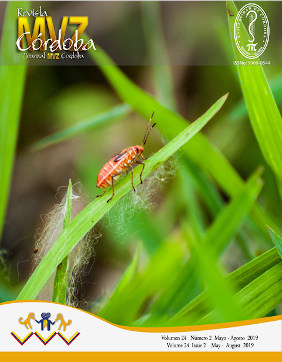Describing the planktonic and bacterial communities associated with bocachico Prochilodus magdalenae fish culture with biofloc technology
Comunidades planctónicas y bacterianas asociadas al cultivo de bocachico Prochilodus magdalenae con tecnología biofloc
Show authors biography
Objective. To describe the planktonic communities and bacteria associated with the bocachico Prochilodus magdalenae fish culture with biofloc technology (BFT). Materials and methods. Bocachico fingerlings, with an average weight of 1.6±0.2 g, were stocked at three densities, i.e., 5 (T1), 10 (T2) and 20 (T3) fish/m3, with BFT in nine rectangular, 6.0 m3 concrete tanks for 120 days of culture. Identification and quantification of the microorganisms was performed every eight days in a sample of 250 ml of water per tank by analyzing aliquots on a Sedgwick-Rafter and/or in Neubauer chambers on a microscope at 10x and 40x magnification. On days 15, 45, and 90 of the fish culture, the bacterial communities were characterized by taking 2 g samples of floc and adding them to 90 ml of sterile saline solution, then subjecting them to conventional microbiological tests. Results. Five planktonic groups (microalgae, rotifers, cladocerans, copepods, and protists with ciliates predominating) with more rotifers and protists in the fish cultures at lower density (T1 and T2) were identified, and the largest amount of microorganisms oscillated between 174.9±21.4 ind/ml (T1) and 125.6±16.1 ind/ml (T2). It was possible to identify ten bacterial strains: Escherichia coli, Enterobacter sp., Klebsiella sp., Salmonella sp. (Enterobacteriaceae), Bacillus subtilis, Bacillus sp., Lactobacillus sp., Pseudomonas sp. (Vibrionaceae), Micrococcus sp., and Staphylococcus sp. (Coccus Gram+). Conclusions. The composition of plankton was similar in all treatments, with rotifers and protists being the most abundant; the bacteria showed a higher proportion of enterobacteria and heterotrophs.
Article visits 1979 | PDF visits
























